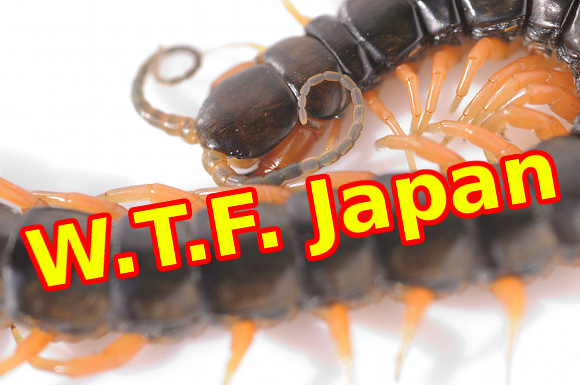
You’ll never let your feet touch the ground again.
Last month we looked at Japan’s creepiest animals, but that was only the beginning. Japan’s scariest creatures don’t live in the water or sky; they live in the cracks of the walls and floors inside your house.
That’s why today we’re counting down the top 5 creepiest Japanese insects. Some of the entries may not technically be “insects,” but we define insect as anything with more than four legs that would make you scream if you saw it in your kitchen.
So let’s get to it! Starting off with…
Honorable Mention: Japanese cockroaches
Cockroaches (gokiburi in Japanese) can be found all over the world – which is why it’s only an honorable mention – but as anyone who has experienced cockroaches in Japan can tell you, the ones here are on another level… literally. In Japan, the cockroaches fly.
▼ Watch this video to see a battle against a flying cockroach to the
(quite appropriate!) soundtrack of a Final Fantasy boss battle.
Also, did we mention these things are huge? Japanese cockroaches can grow up to two inches (50 millimeters), and when they’re flying at you full speed it’s like an exoskeleton bullet right to the face. Add in the fact that they’re just as notoriously impossible to kill as other cockroach species, surviving all sorts of extremely hot, cold, wet and dry environments, and you have basically the Terminator of the insect world.
Thankfully the gokiburi have one weakness: gokiburi hoi hoi – Japanese roach traps.
▼ I mean, could you resist going into a cozy-looking home like that?
Just look at the roach in the window, it’s so cute!
#5. Huntsman spiders
The huntsman spider is known in Japanese as ashidakagumo – literally “long-legged spider” – for good reason: these guys can grow to have a legspan of up to a foot (30 centimeters) long.
▼ A human hand for comparison, and to make you suddenly
have the urge to wipe your sweaty palms on your pants.
These spiders get their English name from the fact that they don’t spin webs; they hunt their prey the old-fashioned way, typically eating cockroaches and other insects, but also geckos and lizards as well.
The reason the huntsman spider is low on the list is because while it may be an eight-legged nightmare with poison fangs, that poison isn’t a big deal for humans. The spiders actually quite helpful at keeping away others pests in the home – much in the same way that burning your house down is an effective way at dealing with pests.
▼ Speaking of when burning down the house seems like a good idea….
#4. Denki mushi
Sometimes nature is just messed up. That’s the only way we can explain the existence of the denki mushi (literally “electric bug”), which get their name from the fact that just touching them feels like getting an extremely painful electric shock.
These guys are fat little barbed-wire bugs loaded with toxins. Touching them isn’t just a quick electric shock and it’s over, oh no, the pain from the thorns on these things lasts for an hour, leaving blisters, rashes, and a painful itch for up to a week.
▼ Watch a video of one here, strutting around like it owns the place…because it basically does. Predators won’t go anywhere near these things.
Denki mushi would be higher on the list if not for the fact that they’re not actually the real bug, they’re just the larvae form of the slug moth (iraga in Japanese). And there’s really nothing special about slug moths – they’re not poisonous or particularly intimidating in any way.
▼ Going through puberty is never easy, but geez,
way to really drop the ball denki mushi.
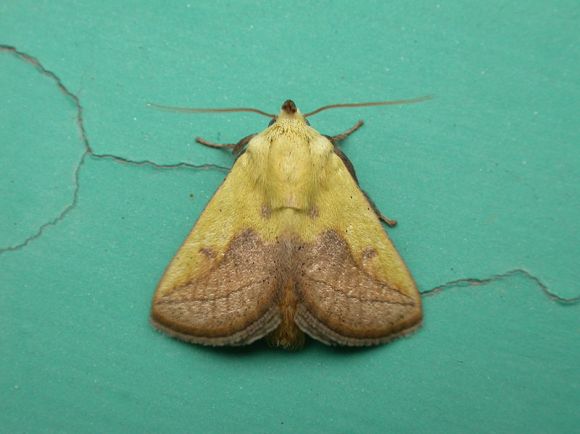
#3. Golden orb weaver spiders
If you thought huntsman spiders were scary, then we’ve got some bad news. There’s something way worse crawling around Japan: golden orb weaver spiders.
There are a bunch of different species of golden orb weavers, but some of the most common ones are jorogumo (literally “whore spider”) and ojorogumo (“big whore spider”). Their English translations may sound funny, but these killing machines get their names from the Japanese folklore of a spider that could change into a woman and lure men to their deaths…and that’s not too far from the truth.
Golden orb weavers release a neurotoxin in their victims similar to a black widow, though less harmful to humans. But don’t start feeling safe yet. Golden orb weavers can grow up to a full body span of eight inches (20 centimeters), and build enormous webs over three feet (one meter) across capable of trapping bugs, birds, bats, and anything else unfortunate enough to fall into its trap.
Watch a giant golden orb weaver in action here, where you can see how it sucks the juice out of its prey, then leaves the dry corpse in its web like a trophy. You, uh, really don’t want to get on their bad side.
#2. Mukade
【定期】好きなムカデ、被ったらRT→ アオズムカデ、ノコバゼムカデ、ヨロイオオムカデ、 #RTした人全員フォローする #相互希望 pic.twitter.com/4V8n0fs7MM
— 生物全般BOT (@nature_yanBOT) August 13, 2016
The infamous Japanese centipedes. On a scale of cute bunny to creepy crawly, these guys are somewhere around demon spawn. Not only do they like to invade homes and hang out in beds and shoes, but unlike other home-dwelling bugs, mukade are aggressive and can deliver a painful bite that can cause a whole bunch of allergic reactions such as swelling, burning, nausea and vomiting.
Mukade can grow up to eight inches (20 centimeters) and eat insects, spiders, small reptiles, and even mice. Despite their large size and multiple legs, they’re quite fast as well, but don’t worry – they’ll take their time and crawl nice and slowly over your face while you’re sleeping.
▼ And best of all, they comes in a rainbow of horrifying colors!
There’s gruesome green, baneful blue, obscene orange, revolting red…
▼ …and good old-fashioned blood-curdling black!
So now I know what you’re thinking: we’re doomed. We should just give up and let the mukade take over already. But wait! The mukade have one weakness:
▼ Cats. As if we needed any more reasons to love them.
And the #1 creepiest Japanese insect is…
.
.
.
.
.
.
.
.
.
.
1. Suzumebachi
“Buzz buzz, motherf*cker.” That’s the last thing you hear before a burning hot nail of a stinger pierces right through your skin.
Asian giant hornets are far and away the scariest, meanest insect you can encounter in Japan. They’re known in Japanese as suzumebachi (“sparrow bees”) due to the fact that these killing machines are the size of small sparrows, dwarfing normal bees. They can have a body length up to 2 inches (5.5 centimeters), a wingspan of up to 3 inches (7.5 centimeters), and stingers that are a deadly 0.4 inches (1 centimeter) long.
Don’t worry though, it’s not like one sting will kill you…but getting a couple of them will. More than 10 stings means you need to get medical help immediately, and more than 30 means you’re probably already dead. There are around 30 to 40 incidents of people dying in Japan from suzumebachi each year.
But the scariest part of all is the hornet’s attitude. These guys (or gals, actually, since the females are the ones with stingers) are ruthless bee-killers. They survive by first scouting a happy beehive, then spraying it with pheromones to let their sisters know where to attack. It only takes 30 or so suzumebachi to take down a hive of 30,000 bees as they can kill up to 40 bees per minute by using their fangs to rip the bees’ heads from their bodies.
Once every bee in the hive is either dead or dying, the suzumebachi ignore the writhing mass of death they created and begin feasting on the bees’ honey and feeding the larvae to their own young.
▼ You can watch one such massacre here
and be happy you’re not a bee.
Thankfully there is one defense bees have against the suzumebachi, and it’s kind of a miracle of nature. When the initial scouting hornet enters the hive, the bees will gather together and smother it. But instead of crushing it or stinging it, they vibrate their wings at extreme speeds, raising the temperature and carbon dioxide level underneath their bee-mass to just enough to kill the hornet, but not the bees, preventing it from coming back with more for an invasion.
As humans, we don’t have any wings to vibrate to heat up the air, but we do have one other defense against the hornets:
▼ Eating them. Or drinking them, if you prefer.
https://twitter.com/griot_sakamoto/status/751172662890668032
So there you have it, the top five creepiest Japanese insects. Did we forget some bugs that have crawled their way into your nightmares before? Let us know in the comments, and remember, always check your shoes.
References: Wikipedia (1, 2, 3, 4, 5, 6)
Featured/top image: Wikimedia Commons/Yasunari Koide (Edited by RocketNews24)
In the meantime, give me a follow on Twitter and let me know if there’s any topics you’d like to see covered on W.T.F. Japan. See you next week!

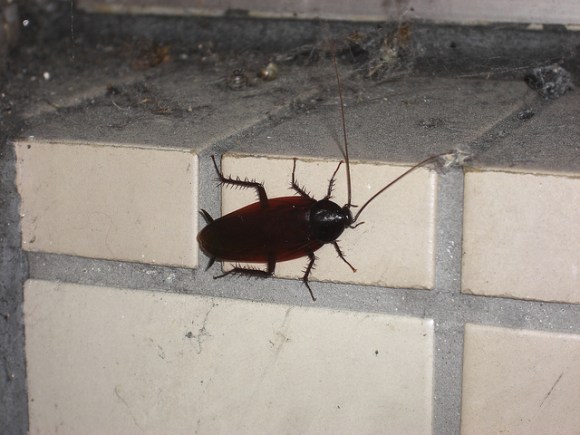
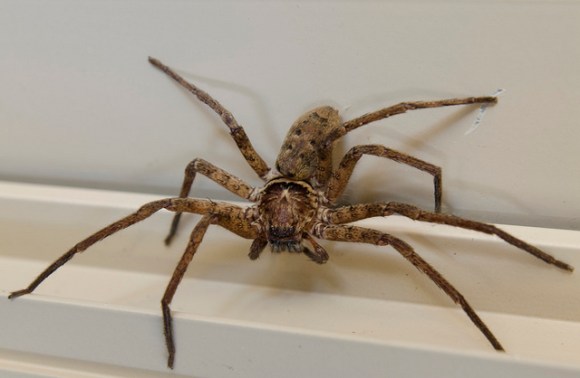
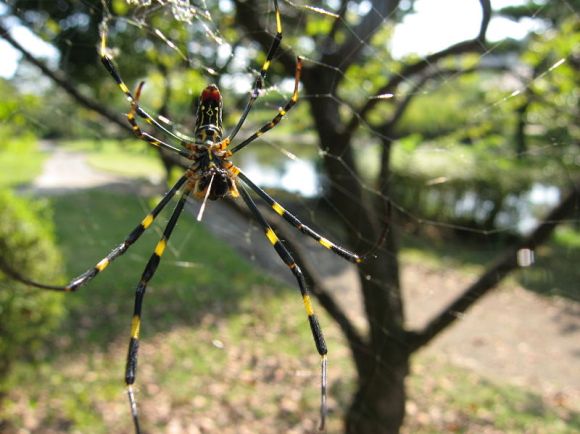
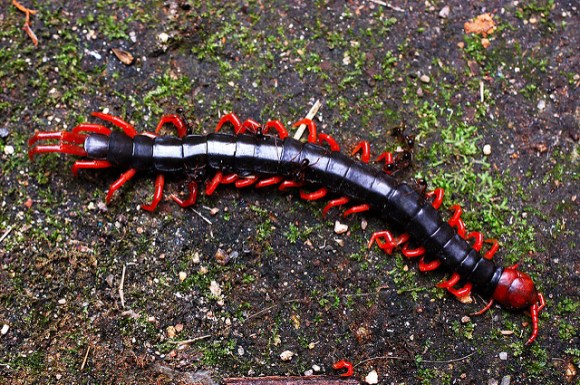
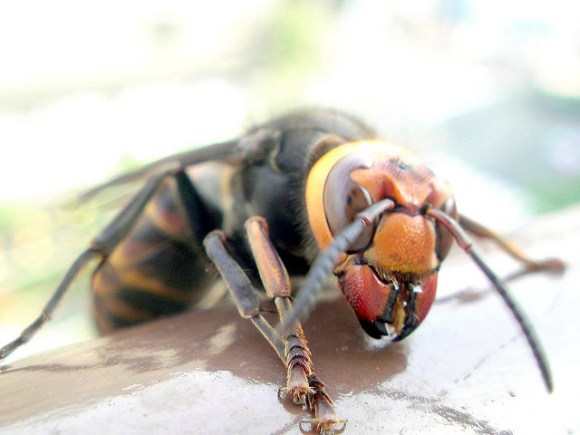
 First new Japanese cockroach species in 35 years discovered by scientists【Photos】
First new Japanese cockroach species in 35 years discovered by scientists【Photos】 They have teeth in their stomaches! And 6 other fun facts about cockroaches
They have teeth in their stomaches! And 6 other fun facts about cockroaches Japan is home to the cutest bug in the world, but they’re on the verge of extinction
Japan is home to the cutest bug in the world, but they’re on the verge of extinction Honey with Hornets from Japan is exactly what it sounds like【Photos】
Honey with Hornets from Japan is exactly what it sounds like【Photos】 W.T.F. Japan: Top 5 offbeat Japanese animal cafes【Weird Top Five】
W.T.F. Japan: Top 5 offbeat Japanese animal cafes【Weird Top Five】 McDonald’s new Happy Meals offer up cute and practical Sanrio lifestyle goods
McDonald’s new Happy Meals offer up cute and practical Sanrio lifestyle goods All-you-can-drink Starbucks and amazing views part of Tokyo’s new 170 meter-high sky lounge
All-you-can-drink Starbucks and amazing views part of Tokyo’s new 170 meter-high sky lounge More foreign tourists than ever before in history visited Japan last month
More foreign tourists than ever before in history visited Japan last month Beautiful Sailor Moon manhole cover coasters being given out for free by Tokyo tourist center
Beautiful Sailor Moon manhole cover coasters being given out for free by Tokyo tourist center The oldest tunnel in Japan is believed to be haunted, and strange things happen when we go there
The oldest tunnel in Japan is believed to be haunted, and strange things happen when we go there Starbucks reopens at Shibuya Scramble Crossing with new look and design concept
Starbucks reopens at Shibuya Scramble Crossing with new look and design concept Is the new Shinkansen Train Desk ticket worth it?
Is the new Shinkansen Train Desk ticket worth it? Arrest proves a common Japanese saying about apologies and police
Arrest proves a common Japanese saying about apologies and police Masahiko Ozumi Paris in Osaka makes the comfiest desserts around
Masahiko Ozumi Paris in Osaka makes the comfiest desserts around Beautiful new Final Fantasy T-shirt collection on the way from Uniqlo【Photos】
Beautiful new Final Fantasy T-shirt collection on the way from Uniqlo【Photos】 Disney princesses get official manga makeovers for Manga Princess Cafe opening in Tokyo
Disney princesses get official manga makeovers for Manga Princess Cafe opening in Tokyo We try out “Chan Ramen”, an underground type of ramen popular in the ramen community
We try out “Chan Ramen”, an underground type of ramen popular in the ramen community Foreign English teachers in Japan pick their favorite Japanese-language phrases【Survey】
Foreign English teachers in Japan pick their favorite Japanese-language phrases【Survey】 There’s a park inside Japan where you can also see Japan inside the park
There’s a park inside Japan where you can also see Japan inside the park Japanese convenience store packs a whole bento into an onigiri rice ball
Japanese convenience store packs a whole bento into an onigiri rice ball Studio Ghibli releases Kiki’s Delivery Service chocolate cake pouches in Japan
Studio Ghibli releases Kiki’s Delivery Service chocolate cake pouches in Japan Japan’s bone-breaking and record-breaking roller coaster is permanently shutting down
Japan’s bone-breaking and record-breaking roller coaster is permanently shutting down New definition of “Japanese whiskey” goes into effect to prevent fakes from fooling overseas buyers
New definition of “Japanese whiskey” goes into effect to prevent fakes from fooling overseas buyers Foreign passenger shoves conductor on one of the last full runs for Japan’s Thunderbird train
Foreign passenger shoves conductor on one of the last full runs for Japan’s Thunderbird train Our Japanese reporter visits Costco in the U.S., finds super American and very Japanese things
Our Japanese reporter visits Costco in the U.S., finds super American and very Japanese things Kyoto bans tourists from geisha alleys in Gion, with fines for those who don’t follow rules
Kyoto bans tourists from geisha alleys in Gion, with fines for those who don’t follow rules Studio Ghibli unveils Mother’s Day gift set that captures the love in My Neighbour Totoro
Studio Ghibli unveils Mother’s Day gift set that captures the love in My Neighbour Totoro Domino’s Japan now sells…pizza ears?
Domino’s Japan now sells…pizza ears? New Japanese KitKat flavour stars Sanrio characters, including Hello Kitty
New Japanese KitKat flavour stars Sanrio characters, including Hello Kitty Sales of Japan’s most convenient train ticket/shopping payment cards suspended indefinitely
Sales of Japan’s most convenient train ticket/shopping payment cards suspended indefinitely Sold-out Studio Ghibli desktop humidifiers are back so Totoro can help you through the dry season
Sold-out Studio Ghibli desktop humidifiers are back so Totoro can help you through the dry season Japanese government to make first change to romanization spelling rules since the 1950s
Japanese government to make first change to romanization spelling rules since the 1950s Ghibli founders Toshio Suzuki and Hayao Miyazaki contribute to Japanese whisky Totoro label design
Ghibli founders Toshio Suzuki and Hayao Miyazaki contribute to Japanese whisky Totoro label design Doraemon found buried at sea as scene from 1993 anime becomes real life【Photos】
Doraemon found buried at sea as scene from 1993 anime becomes real life【Photos】 Tokyo’s most famous Starbucks is closed
Tokyo’s most famous Starbucks is closed One Piece characters’ nationalities revealed, but fans have mixed opinions
One Piece characters’ nationalities revealed, but fans have mixed opinions We asked a Uniqlo employee what four things we should buy and their suggestions didn’t disappoint
We asked a Uniqlo employee what four things we should buy and their suggestions didn’t disappoint Princesses, fruits, and blacksmiths: Study reveals the 30 most unusual family names in Japan
Princesses, fruits, and blacksmiths: Study reveals the 30 most unusual family names in Japan Studio Ghibli’s new desktop Howl’s Moving Castle will take your stationery on an adventure
Studio Ghibli’s new desktop Howl’s Moving Castle will take your stationery on an adventure When in Nara be sure to stop by the cockroach memorial statue
When in Nara be sure to stop by the cockroach memorial statue Tips on protecting yourself from the stinging inferno of Japan’s “burn bugs”
Tips on protecting yourself from the stinging inferno of Japan’s “burn bugs” Keep cockroaches at bay with Japanese bug-hater’s clever, non-chemical idea
Keep cockroaches at bay with Japanese bug-hater’s clever, non-chemical idea W.T.F. Japan: Top 5 most difficult kanji ever【Weird Top Five】
W.T.F. Japan: Top 5 most difficult kanji ever【Weird Top Five】 We try eating insects — they don’t taste like chicken
We try eating insects — they don’t taste like chicken Hornets: The perfect pet for people living in Japan?
Hornets: The perfect pet for people living in Japan? We visit Tokuyama’s Cockroach Fest to take on the “Cockroach Encounter”【Photos】
We visit Tokuyama’s Cockroach Fest to take on the “Cockroach Encounter”【Photos】 Poisonous spider found at venue of Tokyo’s biggest anime convention one week before it kicks off
Poisonous spider found at venue of Tokyo’s biggest anime convention one week before it kicks off Japanese shrine creates special water fountain for thirsty bees
Japanese shrine creates special water fountain for thirsty bees Japanese woman shows quick-thinking, marginal courage in clever cockroach-fighting plan【Photos】
Japanese woman shows quick-thinking, marginal courage in clever cockroach-fighting plan【Photos】 Three centipede and cockroach species are newly named and placed under protection in Okinawa
Three centipede and cockroach species are newly named and placed under protection in Okinawa A visit to Japan’s wasp nest art museum stings us with respect for the industrious insects【Pics】
A visit to Japan’s wasp nest art museum stings us with respect for the industrious insects【Pics】 Anti-insect laser gun turrets designed by Osaka University, expected to work on roaches too
Anti-insect laser gun turrets designed by Osaka University, expected to work on roaches too Vending machine in Kumamoto to offer delicious insect snacks, let you munch them on the go
Vending machine in Kumamoto to offer delicious insect snacks, let you munch them on the go Video shows how computers can become veritable roach motels
Video shows how computers can become veritable roach motels This Japanese man dated a cockroach, dreamed of having sex with it 【Video】
This Japanese man dated a cockroach, dreamed of having sex with it 【Video】
Leave a Reply